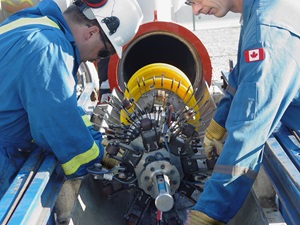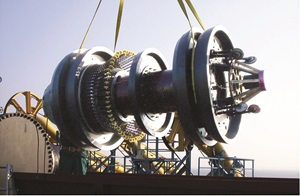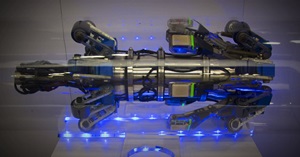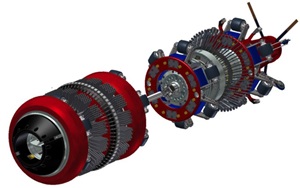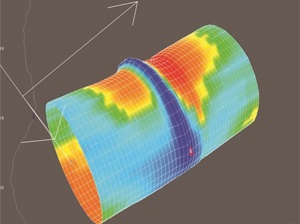Smart Pigs, Safe Pipes (Part 3): Taking the guesswork out of pipeline strain
Baker Hughes’ new technology provides the ‘missing piece’ of pipeline strain measurement
It’s the new AXISS, so to speak, of pipeline strain detection.
Earlier this year, Baker Hughes Inc.—the world’s premier pipeline inspection services company—unveiled AXISSTM, a new in-line axial strain measurement technology that provides much clearer insight into the impact of the environmental forces influencing pipelines.
“Up until now, this has been the missing piece of pipeline strain measurement for the industry. Our AXISS technology measures the result of any movement on the physical characteristics of the pipeline steel,” says Dennis Janda, a Houston-based manager of Process and Pipeline Services for Baker Hughes.
“What we’re talking about is the pure axial strain—the residual, or longitudinal, strain—in the pipe due to some outside force, whether that’s new construction impact, slope instability, subsidence, frost heaves, or flooding,” he adds.
“The big difference here is that traditional technologies for measuring pipeline strain have either only been measuring bending strain or, if they are measuring axial strain, they have been an ‘after-the-fact’ scenario—they’re employed once the operator realizes there’s an issue,” says Janda. “The beauty of our AXISS technology is that we can scan the entire pipeline and confirm or deny that there are areas with undue stress or strain on them.”
Enbridge focuses heavily on prevention to keep our crude oil pipeline network safe. In-line inspection (ILI) tools—or “smart pigs,” to use industry jargon—are highly complex pieces of machinery that use advanced imaging technology to monitor an entire pipeline for anomalies whose dimensions can be as small as a few millimeters.
Baker Hughes is one of our primary partners in prevention, and Enbridge has entrusted Baker Hughes with robust ILI-based pipeline diagnoses since 1998. In that time, Baker Hughes has performed more than 400 pipeline inspections across Enbridge’s pipeline network, producing more than 70,000 kilometers’ worth of inspection data.
Image gallery: Smart Pigs, Safe Pipes (Part 3)
AXISS is part of a complementary suite of Baker Hughes technologies, which allow ILI tools like the VECTRATM GEMINI to move through gas, oil or refined products pipes at about 4.5 meters a second and, in one pass, collect data used to detect various pipeline threats.
Those threats include:
- Any tensile or compressive strain on the pipe, via AXISS magnetic-based technology;
- Potential ovalities, caused by external forces compressing the pipe, with hi-res caliper tools;
- Any bending strain on the pipe, using an onboard inertial measurement unit (IMU); and
- Even the smallest instances of metal loss or corrosion, with VECTRA HD magnetic flux leakage (MFL) tools.
Baker Hughes’ onboard IMUs use the most accurate inertial information possible, and combine it with GPS reference points to record incremental movement over time—and accurately locate pipeline features that deserve a closer look.
“With the information from two tool runs, we can ascertain the difference in the location of pipe due to minute movement very, very accurately,” says Janda.
Check out our previous instalments of the Smart Pigs, Safe Pipes series:
Part 1: Getting down to the finer details
Part 2: New inspection technology doubles down on sensors
Check back with the @enbridge blog channel for future instalments of our Smart Pigs, Safe Pipes series.




